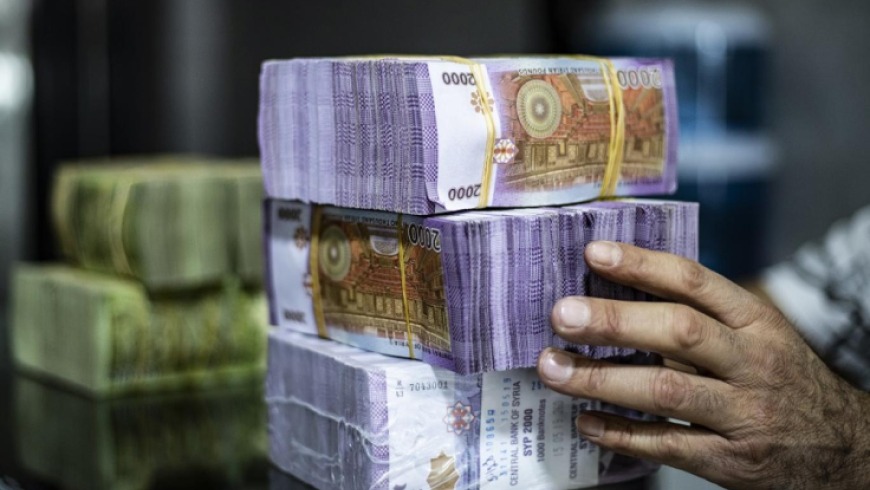The Syrian pound has surpassed the critical threshold of ten thousand against the US dollar, signalling an imminent and potentially more severe collapse in the days to come. According to the recently released 2023 World Bank report, the real GDP of Syria contracted by 3.2% this year, following a 3.5% decline in 2022.
The combination of ongoing conflict, escalating input costs, and water scarcity is expected to severely limit crop production. Furthermore, fuel shortages are projected to undermine manufacturing, disrupt transportation networks, and impede essential services. While inflation is anticipated to decrease, it will remain high throughout 2023 due to the liberalization of the exchange rate, persistent scarcities of food and fuel, and further reductions in subsidies.
General Strike in Manbij Against Forced Conscription and SDF Violations
The growth prospects for the Syrian economy are riddled with significant risks, predominantly leaning toward negative outcomes. Recurring climate-related shocks have the potential to devastate crops and agricultural livelihoods. The protracted conflict in Ukraine may drive commodity prices higher, adversely affecting Syria’s status as a net importer of food and energy. Insufficient sanitation infrastructure could exacerbate the spread of infectious diseases, compounding the already dire situation.
As of January 2022, the cumulative damages across 14 cities and 11 sectors, including physical, social, and infrastructural, range from $8.7 billion to $11.4 billion.
The report highlights, “The estimated cost of material damage caused by the earthquake amounts to approximately $3.7 billion, with additional losses estimated at around $1.5 billion, resulting in a total estimated impact of $5.2 billion. These losses have had a profound effect on production in key sectors, revenue loss, and increased operational costs in service provision.”
The housing sector suffered the most substantial impact, accounting for 24% of the total damage, followed by transportation, environment (related to debris removal), and agriculture. In terms of losses, the agriculture sector experienced the greatest setback, with an estimated food access gap of US$1.3 billion, representing 83% of the total losses.
Among the affected governorates, Aleppo bore the brunt of the devastation, accounting for 44% of the total damages, primarily in housing and agriculture, followed by Idlib at 21%.
Aleppo topped the list of most affected cities, accounting for approximately 60% of the total damage, followed by Latakia (12%) and Azaz (10%).
The projected contraction of Syria’s real GDP is expected to worsen by an additional 2.3 percentage points in 2023 due to the earthquake, on top of the previously forecasted 3.2% decline. This supplementary contraction is primarily attributed to the destruction of physical infrastructure and disruptions to business activities.
The future of the Syrian pound appears bleak, with inflation expected to rise significantly due to reduced availability of goods, increased transportation costs, and heightened demand for reconstruction materials. Over twelve years of conflict, the population has become increasingly vulnerable to crises and natural disasters. The recent earthquake has further exacerbated humanitarian conditions, particularly in terms of food security and housing vulnerability. The most affected groups include women, children, the elderly, people with disabilities, and the impoverished.
The earthquake-stricken areas were home to nearly 3 million internally displaced persons, accounting for 50% of Syria’s total internally displaced population. These individuals were already grappling with severe social challenges.
According to the World Bank, the estimated recovery and reconstruction needs across the six assessed governorates amount to $7.9 billion, with $3.7 billion required in the first year after the earthquake, followed by $4.2 billion in the subsequent two years. The agriculture sector requires the most significant investment, comprising 27% of the total needs, followed by housing (18%), social protection (16%), and transportation (12%).
Given this dire situation, the question arises: what can be expected regarding the future improvement of the Syrian pound? There is currently no supporting evidence or factors preventing its free fall against the US dollar. Unofficial reports and figures suggest that the foreign exchange reserves in the Syrian Central Bank have plummeted from $17 billion to less than $70 million in 2019, but the precise details remain shrouded in secrecy, regarded as matters of national sovereignty.
Moreover, Syrian tax revenues have completely collapsed, considering that over 84% of Syrians live below the poverty line, according to the United Nations. Syrian oil revenues are now controlled by the United States, which channels them to the Syrian Democratic Forces (SDF). Consequently, the Syrian government has transitioned from being an oil exporter, with a daily output of 150 thousand barrels after 2015, to an oil importer. As a result, the Syrian treasury’s revenue sources have essentially evaporated, leaving a void.
In reality, the actual value of the US dollar in relation to the Syrian pound is far greater and may soon surpass the threshold of ten thousand pounds, or even twenty thousand. The free fall of the Syrian pound is likely to persist as long as the Assad regime remains in power, without any meaningful political transition. It begs the question: will Assad prioritize addressing the economic hardships faced by the Syrian people today or in the future?
This is the underlying predicament concerning the Syrian pound. While the Syrian people bear the brunt of its depreciation, any potential improvement will ultimately fail to benefit them. The core issue lies with Assad and his regime, rather than the US dollar.
This article was translated and edited by The Syrian Observer. The Syrian Observer has not verified the content of this story. Responsibility for the information and views set out in this article lies entirely with the author.


